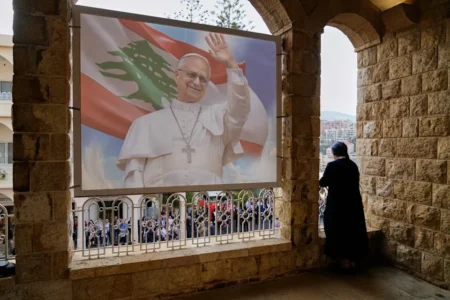The Middle East crisis has entered a new and dangerous phase. The skies over the region are tense with fear, smoke, and the sound of war. Each hour brings new threats and fresh reports of missile strikes. Israel and Iran are exchanging attacks. The entire region seems frozen in a moment just before a possible major war.
In this fragile situation, a statement from former U.S. President Donald Trump has made headlines around the world. His sharp warning has shaken both Tehran and Washington.
On Tuesday, Trump posted a message on social media that directly targeted Iran’s Supreme Leader, Ayatollah Ali Khamenei. Trump wrote that the United States knows exactly where Khamenei is hiding. He described the leader as an “easy target,” though added that the U.S. is not taking action—for now.
This statement is not just political theater. It has raised serious concerns about what might come next. While there were no bombs in his post, the words carried the weight of war. Trump’s message is being viewed as a spark that could set the entire region ablaze.
Trump continued his post by saying that the U.S. does not want missiles fired at civilians or American troops. But he also warned that American patience is running out. He ended the message with a calm yet chilling line: “Thank you for your attention.”
Soon after, he made another post. This time, he demanded Iran’s “unconditional surrender.” These two words—simple but heavy—put enormous pressure on the Iranian government. They also suggest that Washington is preparing for more than just diplomacy.
Just minutes before this post, Trump claimed that the United States now controls Iran’s airspace. Experts are divided on whether this claim is realistic, but most agree it is a direct challenge to Iran’s sovereignty.
U.S. Defense Secretary Pete Hexed confirmed on Monday that more military equipment has been sent to the region. Senior officials in Washington described the move as a “defensive step.” However, many see it as a sign that U.S. forces could become more involved in Israeli military actions.
A U.S. defense official told reporters that Hexed has ordered the Nimitz Carrier Strike Group to move into the area under Central Command. The goal is to protect American personnel and maintain a strong defensive position.
This growing U.S. military presence is adding to the already high tensions. Since Friday, the situation in the region has gotten worse. Israel launched airstrikes on several Iranian targets, including military and nuclear sites. Iran responded with its own missile attacks.
The latest moves by both sides have caused massive damage and loss. Within this chaos, Trump’s harsh messages have created even more fear. His comments have cast a dark cloud of uncertainty over the Middle East.
No one knows what will happen next. But one thing is clear—the region is now closer than ever to a wider conflict. This new chapter of the Middle East crisis could have long-term effects on global politics.
Each second feels heavier. Each breath taken under these skies seems to carry the heat of an unseen volcano. Leaders across the world are watching closely. The next move from either side could reshape the future of the region—and beyond.







